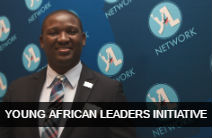About Cameroon
USAID programs in Cameroon further our global mission of partnering to end extreme poverty and promote resilient, democratic societies while advancing our mutual prosperity. The republic is dominated by a strong central government and a longstanding president. Human rights problems persist despite some improvement. However, economic success has not sufficiently raised the health levels of the population: life expectancy, under-5 mortality, and maternal mortality are worse than the regional average. The rate of HIV infection is 4.3 percent – among the highest in West and Central Africa region. About 40 percent of the population lives below the poverty line.
We focus on making sustainable improvements to healthcare, fighting HIV/AIDS, conserving natural resources, promoting democracy and governance and sustaining economic growth. Programs financed through the President’s Emergency Plan for AIDS Relief (PEPFAR) are the largest health activity and ensure access to HIV/AIDS prevention, care, and treatment services for key populations; strengthen systems and services for orphans and vulnerable children; procure life-saving HIV/AIDS-medications, and improve access to pharmaceuticals.
We also contribute to the Global Health Security Agenda program which assists the Government of Cameroon to prevent, detect, and respond to infectious disease threats, including those that originate from animals. The neglected tropical diseases program is fighting disease that can be cured or prevented by distributing drugs donated by the pharmaceutical industry.
The Food for Peace program, in partnership with the World Food Program, is focused on refugees and internally displaced persons, in the North in relation to the Boko Haram conflict and in the East because of the situation in the Central African Republic.









Comment
Make a general inquiry or suggest an improvement.